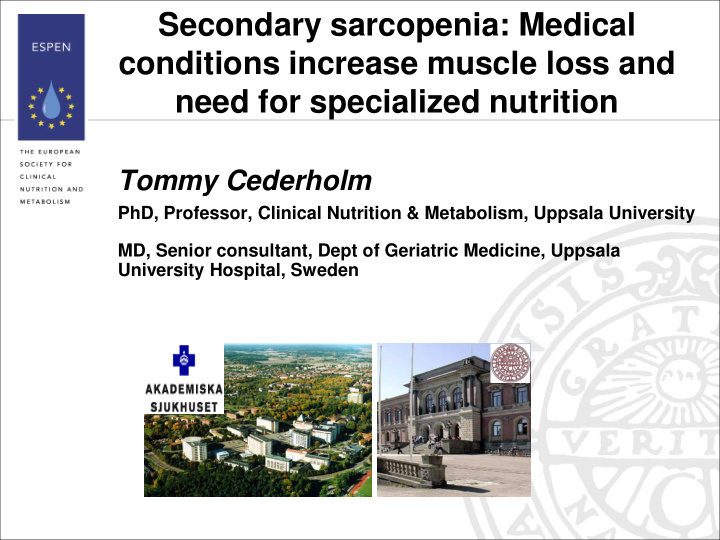



Secondary sarcopenia: Medical conditions increase muscle loss and need for specialized nutrition Tommy Cederholm PhD, Professor, Clinical Nutrition & Metabolism, Uppsala University MD, Senior consultant, Dept of Geriatric Medicine, Uppsala University Hospital, Sweden
Sarcopenia – a novel concept for an old problem "Muscle loss steals the freedom of the old „ Irvin Rosenberg 1989 Initially focus on ageing and older people Sarcopenia is a syndrome • Muscle mass decreases by characterized by - 30-50% from 20 to 80 y progressive loss of muscle - 1-2%/y after 50 y mass and strength with a • Selective typ II fibre atrophy risk of adverse outcomes Muscle strength by • Cruz-Jentoft et al. Age Aging 2010;39:412-23 - 15% / 10 y between 50 and 70 y - 30% / 10 y thereafter
What is sarcopenia? Cederholm et al. ESPEN Guidelines on defintions and terminology of clinical nutrition. Clin Nutr 2017
Classification of sarcopenia - EWGSOP Primary sarcopenia (or age-related) when there is no evident cause but ageing itself Secondary sarcopenia when one or more causes are identified: • Activity-related sarcopenia • bed rest, sedentarism, deconditioning, non-gravity • Disease-related sarcopenia • advanced organ failure (heart, respiratory, liver, renal, brain, intestinal), inflammatory disease, malignancy, endocrine disease • Nutrition-related sarcopenia Cruz-Jentoft et al. EWGSOP. Age Aging 2010
Recommend
More recommend